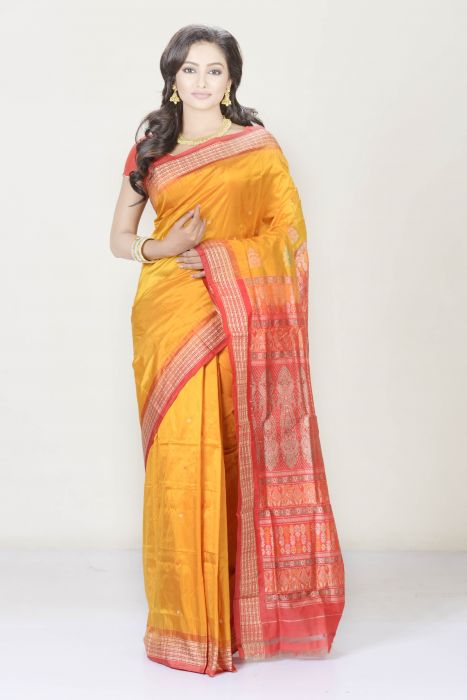5 Shockingly Unheard Of Traditionally Handmade Indian Sarees
Traditional handcrafted sarees of India have alwyas been around until the advent of the powerlooms. Efforts are made by purists and local governing bodies to revive and protect the several dying handmade saree crafts.
Following is a list of shockingly unheard of traditional Indian handmade sarees:
Following is a list of shockingly unheard of traditional Indian handmade sarees:
Bomkai Saree
Also known as Sonepuri, this saree is a traditional textile of Orissa that uses extraordinary fabric. It is a combination of Ikat and embroidery woven together. Motifs on the saree are inspired by nature with tribal art. The borders are often seen in contrasting colours with delicate work on the pallu. They are available in cotton and silk fabrics.
Lehariya Saree
A Rajasthani garment, Lehariya saree has a striped trademark pattern. It is one of the most celebrated designs of the tie and die domain, and usually available in bright colours. The original essence of Lehariya has been retained since its origin, although earlier, the art exclusively belonged to the Marwari community of Rajasthan. Lehariya sarees are available in cotton and silk.
Bhagalpuri Saree
The origin of Bhagalpuri is traced back to centuries ago. Known to be crafted using the finest Tussar silk, it showcases the pure spirit of Bhagalpur in intricate and flawless work. Such is the versatility of its traditional designs, that the saree is suited to be worn for any occasion with ease. Over the years, this garment has also attracted designers globally.
Mangalgiri Saree
It is a popular handloom saree from Andhra Pradesh. The saree has a plain body, with exquisite Zari Nizam work on its borders and pallu. The geometric, simple designs are inspired by tribal art. It is known for its durability, which is better than most traditional sarees. Mangalgiri Sarees are produced in a series of bright colours, an example of sheer elegance.
Narayan Peth
The Narayan Peth is a traditional silk saree of Maharashtra. The sarees have a checkered surface design with embroidery, and the border or pallu have ethnic designs on them. The border is decorated with Zari characterised with Rudraksha motifs. The entire community involved in weaving of this saree are located at Narayan Peth in Solapur, Maharashtra.






Comments
Post a Comment
What are your thoughts? Let us know.